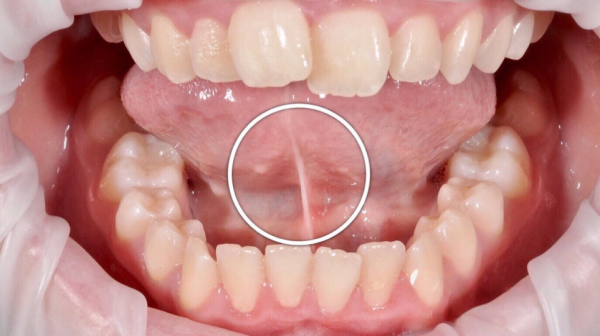
2023-05-29 3822
Abstract
The frenulum is a thin strip of tissue between the tongue and the floor of the mouth. The clinical manifestation is that the tongue cannot protrude normally and freely. When the tongue is protruding forward, the tip of the tongue is sunken due to the pulling of the tongue tendons, which not only affects the appearance, but also may affect the daily diet or rub against the lower front teeth, resulting in ulcers.
Key Words: tongue tie surgery, diode laser, soft-tissue cutting
1.Conventional Surgery
At present, the commonly used traditional scalpel operation method for the too short frenulum of the upper lip is the horizontal cutting and vertical suture method: under local infiltration anesthesia, use the frenulum hook to lift the belly of the tongue upwards to keep the frenulum tense, and use scissors or a scalpel to horizontally Cut the frenulum with a vertical slit, and the length of the cut can reach 2cm, so that the tip of the tongue can touch the lingual surface of the upper anterior teeth when opening the mouth. Then intermittent longitudinal and transverse incisions appear diamond-shaped wounds. Be careful not to damage the lingual vein and the ducts of the submandibular glands on both sides of the floor of the mouth. Stitches were removed 5-7 days after surgery.
2.Diode Laser Surgery
01 The principle of semiconductor laser applied in lingual tie surgery
Due to its excellent clinical advantages, laser is also widely used in the treatment of oral-related diseases. Among them, semiconductor laser wavelength (810nm-980nm) has excellent absorption rate of water, hemoglobin and pigment, which makes it suitable for hemostasis, soft tissue cutting, sterilization, Anti-inflammatory, analgesic and wound healing functions.
The principle of semiconductor laser surgery is to use the photothermal effect of laser to act on the tissue in the lesion area, so that the tissue in the lesion area absorbs heat and heats up to coagulate or carbonize, so as to realize the function of soft tissue cutting. Since the semiconductor laser has an excellent hemoglobin absorption rate, it can seal the surrounding capillaries during the cutting process, so there will be no bleeding during the cutting process. The advantages of non-bleeding surgery: First, the surgical field is clear, and the doctor can operate more accurately. On the other hand, since there is no bleeding, the postoperative inflammatory reaction of patients is lighter than that of traditional surgical methods, that is, postoperative wound pain, Less swelling for improved patient comfort. In addition, the laser can form a coagulated layer on the wound surface while performing soft tissue cutting. On the one hand, it can resist infection, and on the other hand, the wound surface does not require sutures, which solves the problem of postoperative sutures.
02 Operating Procedures
Take diode laser for tongue tie surgery as an example:
①Reduce local anesthesia or no anesthesia in preoperative preparation stage;
②The frenulum puller lifts the belly of the tongue upwards to keep the frenulum in tension;
③Set the corresponding treatment protocol in LunDent (as Picture 1), start the laser emitting, lightly touch the surface of the lace with the optical fiber (carbonization treatment), and melt the lace to implement the cutting function. After the cutting is completed, no additional processing such as suture is required.

Picture 1
03 Postoperative Care
①Keep oral hygiene and use mouthwash twice a day.
②On the third day, apply vitamin E oil to the wound before going to bed
③Insist on lip or tongue exercise for 10 days after operation, at least 3 times a day. Hold the lips with your hands and move from left to right, top to bottom, turn your lips up with your hands and extend your tongue to the lip frenulum area or beyond. Movement exercises are best done quickly and accurately, taking care not to overextend or stretch.
④ If there is a small amount of bleeding during exercise, it is normal, and it will recover after stopping exercise.
04 Comparison of the two surgical procedures
